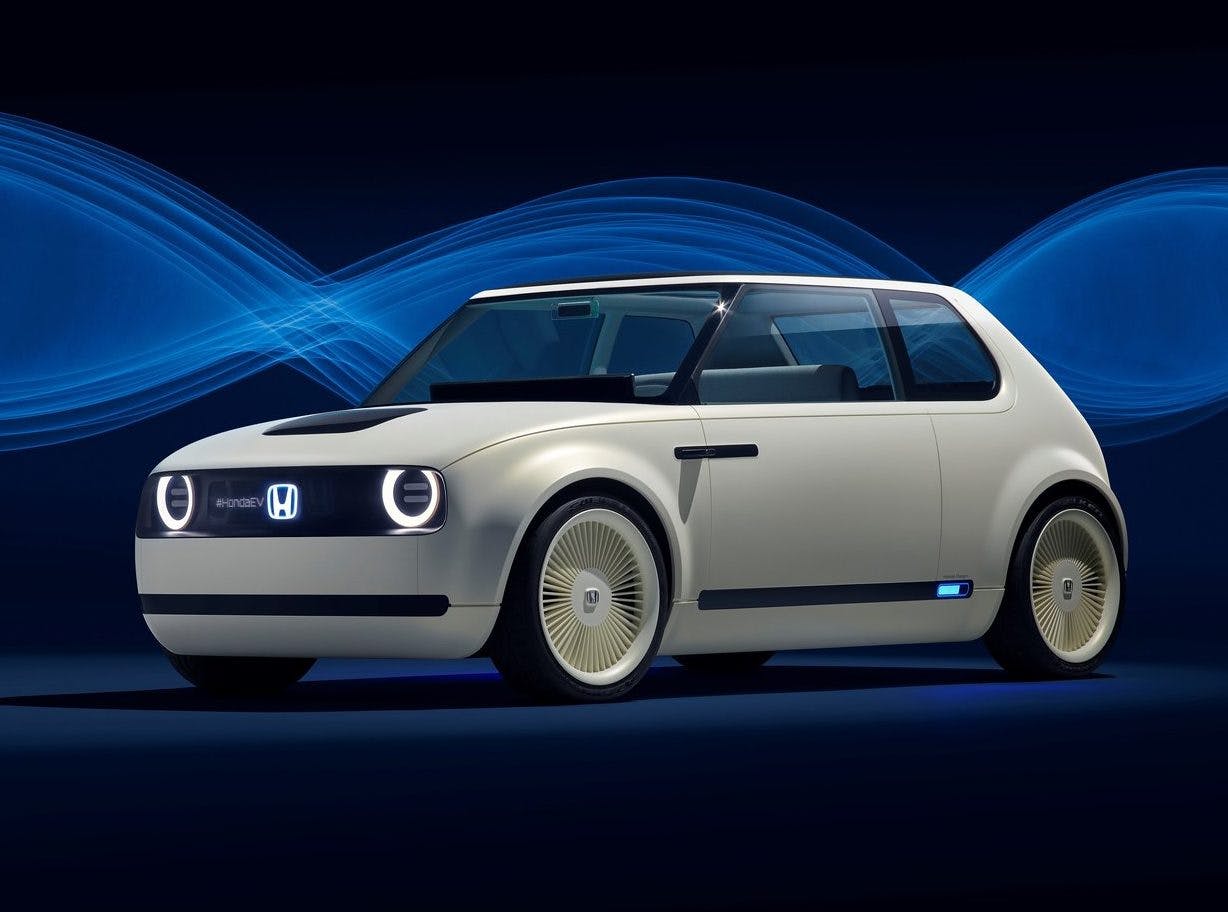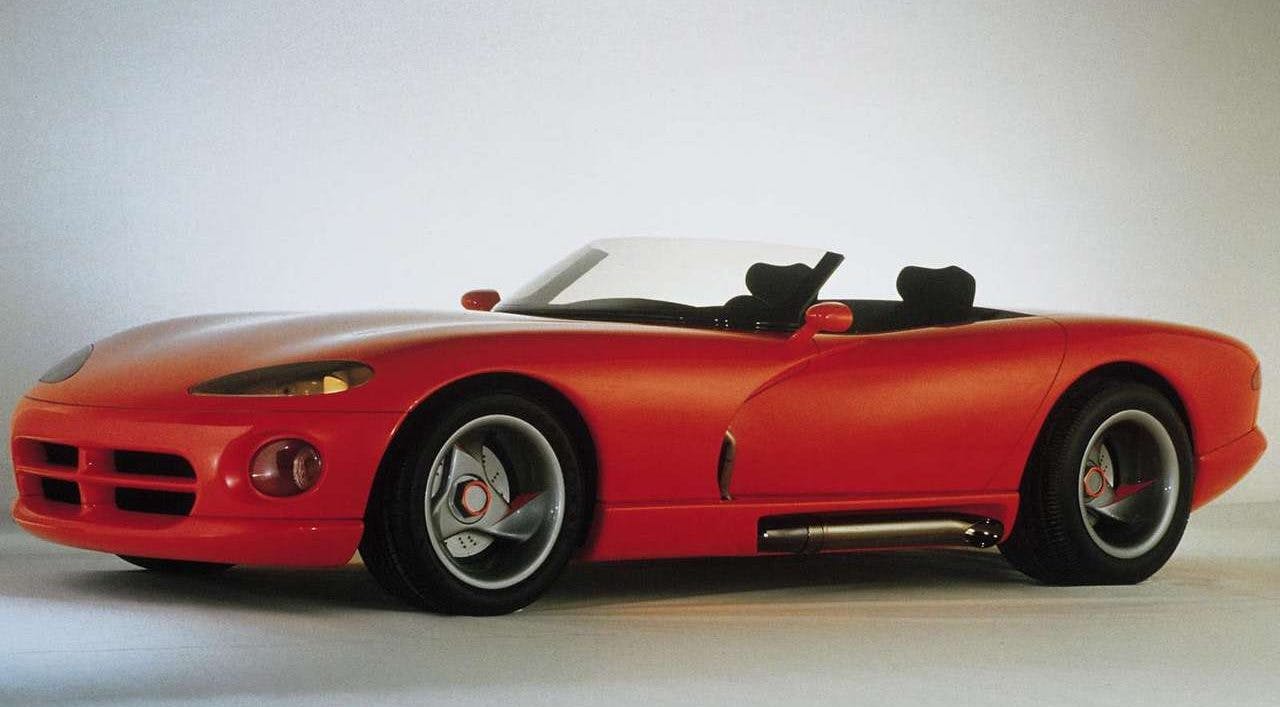Media | Articles
Vision Thing: Concepts are the boxes, not the blister packs of car design

Hello there! My name is Adrian Clarke. I am a professional car designer, earning a degree in automotive design from Coventry University and a Masters in Vehicle Design from the Royal College of Art in London. I worked for several years at a major European OEM. and in the ’90s, I daily drove a 1979 Ford Thunderbird while living in London.
I’ve been writing design articles for Hagerty these last several months (you can find them here), and it’s my pleasure to welcome you to my new column: Vision Thing. In the media there seems to be a lack of understanding about what car design is, why it’s important, and what it contributes to the stories of the vehicles we love so much. Here, we will talk about a lot more than how to draw pretty cars. We will cover design history, philosophy, influence, analysis—the sort of subjects from the sort of perspective you aren’t likely to find elsewhere. It’s, well, a Vision Thing.
In the U.K. we didn’t have Hot Wheels, at least when I was a young gearhead in the early 1970s. I know, I know, but before you consider this a nationwide case of child neglect, don’t worry. We had our own domestic brand of pocket-sized diecast cars, Matchbox, and they were my introduction to cars that I had never heard of, let alone seen. At five years old, I didn’t know what the exotic sounding Pontiac Firebird was, but I know I wanted one. (Ironically, in 1996 the brand was sold to Mattel, the makers of Hot Wheels.)
Instead of coming in clear blister packs so you could see the actual toy you’d be getting, they came in small cardboard boxes with beautiful illustrations showing which model it was; until you got it open you’d never really know what your new addition actually looked like. Even then I somehow knew the car inside couldn’t quite match the picture, but somehow it didn’t matter. Anticipation trumped all on those rare occasions I was allowed to choose a new one.
The common conception is that it’s a bit like this with concept cars. Manufacturers tease us with startling designs they know they have no chance of wrestling through a byzantine design process. When they whip the dust cover off the one you can actually buy, it’s going to be a slightly watery disappointment compared to the original, so why not get the pain over with and show that in the first place? The short answer: time.
The slightly longer answer is time, resources, and intention. But to properly explain all of that we need to understand what a concept car actually is, and what they are for.
Like nearly everything to do with automotive design, it all started with Harley Earl. He created the first ever concept car, the Buick Y-Job, in 1938. Earl’s aim was “art with intent.” He wanted to free his designers from the grinding mundanity of production reality. GM’s Motoramas were the gallery, and the wild succession of concepts that followed the Y from 1951 were the exhibits. Thus the public was wowed by the dream cars of the future—an idea that stayed with us ever since.
Marketplace
Buy and sell classics with confidence

As time went on, a good concept vehicle operated as a statement of intent. You weren’t a Serious Car Company unless you could produce, at great expense, a crowd-pleasing, hand-built, fantastical one-off. And that expense was almost always an issue. A concept will make the accounting department’s eyes water to the tune of well over seven figures, which had to be justified in less nebulous terms than PR value.
Major manufacturers took a leaf straight out of the carrozzeria playbook. The independent studios had long been re-bodying existing vehicles on spec as a way of touting for lucrative future business; this is what we think we can do better than you. The OEMs took this idea themselves and began to use concepts as a way to show the public what they could build and sell with enough interest, or to preview a future design direction. Moonshot flights of fancy still happened; they just had to have more relevance.
Which is about where we find ourselves today, with concepts falling roughly into one of two camps: 1) the designers have been day-drinking and nobody, obviously, is ever going to build the thing; or 2) a design that looks almost ready to go apart from the huge wheels, exaggerated stance, and a paint job that requires sunglasses. Or put another way, take my money.
A word on the first. There was a time when if you saw one of these at a motor show it was behind the velvet rope, because apart from being priceless and fragile, if you looked closely enough they were, er, well, rough is a harsh word. You could feel the seams, let’s say. And don’t be fooled by everything you see in an influencer video demonstrating features of the future that appear to be magic. A car in public apparently driving itself at low speed with no occupants? I can assure you there is someone off camera with a remote control to operate all those neat tricks. I know because we did exactly the same thing ourselves—to woo investors.
And so we move onto the second category, those concepts that look almost production-ready under the lights, but seemingly lose something in translation by the time they get to the showroom. Guess what? Sometimes they are very, very production ready indeed. But we’re getting a little ahead of ourselves.
Whether they fall into the first or second category, both are usually made exactly the same way. They start off, like any other design, as a series of sketches before moving onto the clay and digital model stages. They go through the same rigorous review and gateway process as any other design. Once the design is frozen and signed off, it’s time to build the actual car, which, if you hadn’t guessed, is essentially a very fancy hard model. And this is where the time, resources, and intention bit comes in.
If you’ve ever built a 1/24-scale car kit, you carefully assemble and paint a series of pre-made parts that you pop off a sprue. Everything you need is there, from glass, to body and engine parts, to rubber tires. Now imagine if you had to make every part yourself, building the entire thing from scratch. This is what it is like making a concept car. Nearly every single part has to be hand-made. The digital data will be used to mill molds for the body panels, which will then be laid up in GRP (glass-reinforced plastic). A frame must be constructed to hang the panels from. The wheels will be milled from solid blocks. Interior fabrics stitched in by hand. Glass may not even be glass, but rather clear acrylic. The whole thing requires an absurd amount of fettling, tweaking, sanding, bodging, filling, gluing, and generally mucking about with to fit it all together. And that’s before getting into wiring in any trick electronics, instrument displays, lighting, movable features, and whatever it needs to move under its own steam. It could be a couple of electric motors if only low-speed operation is required, or an actual combustion engine for more normal driving—in this case a donor car may be sacrificed.
A skilled team of modelers can complete all this work in about a year or so. Now cast your mind back to our design realization article. The most time- and resource-intensive part of creating a car is getting the design ready for production. It takes around four years to turn a frozen design into a functioning vehicle that can be built, won’t rattle or cook itself or its occupants to death, and fulfills all the relevant legal obligations where it will be sold. Concept cars don’t take into account lighting viewing angles, max in service wheel operating envelopes, aero count, tolerance stacks, and other such fascinating engineering problems, because that’s not the purpose of a concept. Beyond that, and more practically, it’s uneconomical to spend a lot of time and effort on a concept that may or may not make production. And then your car is dated before it’s even shown because it’s taken you an extra four years to get it ready.
However—and it’s a BIG however—sometimes concepts are very production-ready. In these cases, some realization work will have been done, mainly on parts you can see. Things like door openings, glazing framing and sealing, shut lines, interior layouts, and seating will be reasonably accurate. It’s possible the concept may even have a prototype body: “soft” tools can be made that can stamp out a short run of body panels before committing to the expense of full production “hard” tooling.

This is usually done for concepts that the OEM is almost certainly committed to, like the 2018 Volkswagen Tanoak, which was 95 percent of what would have gone into production. These always have extravagant detailing and lighting, hence the requisite “it remains to be seen what changes are needed for production” caveat to get the OEM out of jail in case something actually can’t be done.
Next time an OEM shows a concept that has you panic fumbling for your checkbook, take a few minutes to really study the details: door openings, stance, glazing, shut lines, and wheel arch clearance. Ask yourself, does it really look plausible, or are the designers high on marker fumes again? That might give you an inkling as to whether they are serious about building it.
As to why some get built and some don’t, well that’s another article entirely …


























